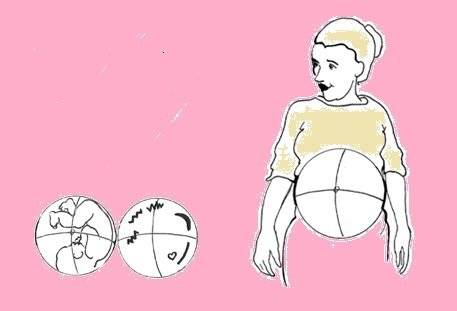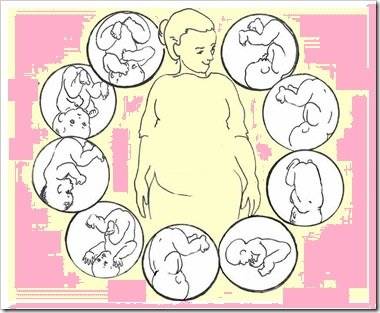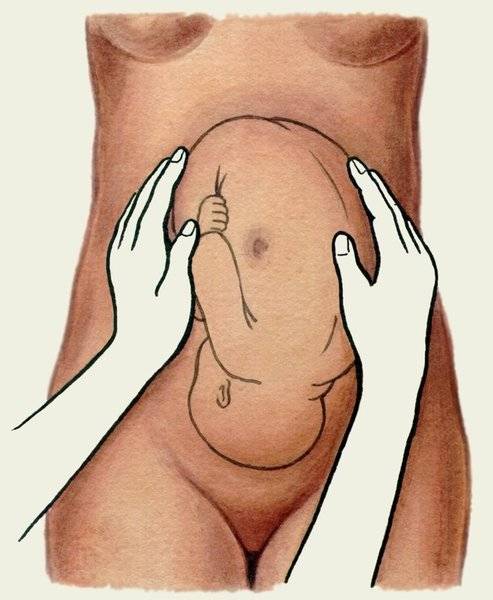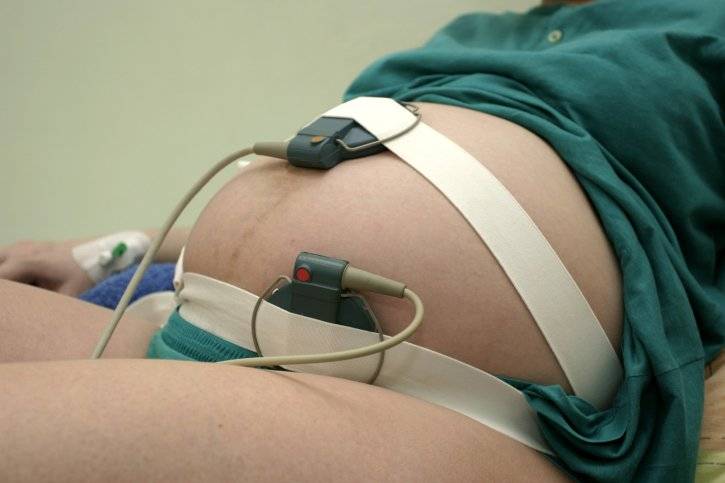Antipyretics for children are prescribed by a pediatrician. But there are emergency situations with fever when the child needs to be given medicine immediately. Then the parents take responsibility and use antipyretic drugs. What is allowed to be given to infants? How can you lower the temperature in older children? What medications are the safest?
Most expectant mothers are interested in knowing where the baby is located in their tummy. And the closer the birth is, the more important this information becomes for the mother in labor. . In some of these options, childbirth through the female natural birth canal is contraindicated. Not every doctor will undertake a natural birth with a breech presentation, and a cephalic presentation of the fetus does not always provide a guarantee. The doctor, of course, will help determine the baby’s presentation, but sometimes it’s simply unbearable to wait for the next appointment, especially if the mother hopes that the baby will turn over and take a more favorable position. But how to understand how the fruit lies? How to independently determine the position of the fetus in the uterus, how to understand whether the baby has turned over? Calculating the position of the baby yourself is not at all as difficult as it might seem. By the way, this is a great way to get to know your child better.
It makes sense to make attempts to determine the position of the baby in the uterus only after the 30th week of pregnancy. Naturally, the longer the period, the more clear how the fetus lies, so if you cannot determine the presentation of the baby, you need to try again in a week - the next attempt will certainly be successful! In addition, up to 33-34 weeks of pregnancy, including the position of the baby in the uterus may change, the child may roll over. After 34 weeks pregnant it, as a rule, becomes stable, that is, the baby remains in the position in which it will be born.
____________________________

· How to determine the position of the fetus yourself: listen to the heartbeat
The easiest way to independently determine the position of the fetus in the uterus is to find out exactly where its heartbeat is best heard. To do this you will need a very ordinary stethoscope, a little patience and good luck. Your goal is to catch the beat-like sounds of a heartbeat with a frequency of 120-160 per minute. It is better to start listening from the left lower segment of the abdomen - in this place you can hear the heartbeat of most babies who have “fallen into place.” You don’t have to limit yourself to the front surface of the abdomen - in some positions of the child, the heart can be heard more clearly if the stethoscope is applied to your side. The heartbeat is best heard in the place where the baby's upper back is located.
This method is very useful when it is necessary to understand whether the fetus has turned over for birth into a cephalic presentation from a breech presentation. Find the place where his heart beats most audibly, and by doing exercises every day that help the baby roll over, watch whether the baby's position in the uterus changes. With a breech presentation of the fetus, it will be slightly higher than with a cephalic presentation.
· How to independently determine the position of the fetus: compose belly map

This method allows you, without the help of ultrasound, to independently determine the position of the fetus in the uterus and create a so-called detailed “map” of the abdomen. Its essence, in short, is this.
First, observe the baby’s movements (what is their nature, direction, in what part of the tummy you feel them). After this, take a supine or semi-lying position and gently feel the baby through the abdomen while the uterus is relaxed. This way you can create a “map” of the abdomen, where you can note the following observations:
- where the strongest kicks are felt - these are the baby’s legs,
- where slight movements with a small amplitude are felt - there, most likely, there are handles,
- where there is a large protruding area similar to a head - this is the baby’s butt,
- on which side is your tummy smoother and firmer - this is the back,
- where the doctor or you heard the heartbeat - there is the upper part of the baby’s back.
For convenience, you can even draw a conditional “map” and consult it to understand whether the fetus turned over by the scheduled date, and how exactly it turned over.
· How to distinguish a cephalic presentation of a fetus from a breech presentation?
One way or another, you will feel the protruding part of the child from above. To determine the position of the baby in the uterus, to figure out whether it is the butt or the head, you need to understand that only the neck and back extend from the head, but also the legs from the baby’s butt. You can actually feel the legs if you are persistent, or feel them when the baby kicks. In addition, listen for yourself or remember where the doctor last found the sound of a heartbeat - if it was from below, then the child lies head down, and if from above, then with his buttocks down.
· Upside down - backwards, or how to tell if the fetus has turned over, and how to make the baby turn upside down?

To begin with, I would like to draw your attention to the fact that cephalic presentation of a child is not an unambiguous indicator for a successful natural birth. There are other, no less significant factors in the position of the fetus. In particular, it is important to understand how the fetus lies in relation to the back, that is, where the child’s back is facing - towards the mother’s back, or towards the stomach? If in recent months the baby most of the time lies with his back to his mother’s back (the so-called “posterior presentation”), then, most likely, he will begin to be born from this position. But childbirth in this case may be longer, more painful, and with a high degree of probability may end in a caesarean section.
You can determine the position of the baby in the uterus by observation: if you can’t find the baby’s back when you feel your abdomen, this means that it is facing your back. In this case, it makes sense to try to “persuad” the baby to roll over. The back is the heavier part of the baby compared to the arms and legs, so it usually tends to turn down on its own - all that remains is for the mother to take the desired position. In recent decades, women have led a much less mobile, less active lifestyle and, especially during pregnancy, spend a lot of time in a half-sitting or half-lying position, largely because of this, gravity pulls the child's back down - towards the mother's back. That is, in order for the baby to roll over, the mother needs to move more actively and more often take positions in which the force of gravity will pull the back of the fetus towards the mother’s belly - any straight positions, as well as poses with the body tilted forward, standing on all fours, swimming .
Tothe fetus turned over in the uterus after 31 weeks of pregnancy from head into the pelvic presentation The following exercises are recommended:
1. Lie on your right side, lie there for 10 minutes, and then quickly turn over to your left side and after 10 minutes again to your right. Repeat the exercise 3-4 times in a row several times during the day, before meals.
3. The turning of the fetus is promoted by exercises in the pool.
4. If the baby turns over on his head, it is recommended to wear a bandage for a couple of weeks so that the correct position of the fetus is fixed.
Performing such exercises has contraindications, which include: complications during pregnancy (gestosis in pregnant women, threat of premature birth), placenta previa , scar on the uterus as a result of a cesarean section in the past, uterine tumors.
Previously, they tried to correct the breech presentation of the fetus, which they call manually, by externally rotating the fetus - through the abdomen, the doctor tried to move the baby’s head downwards. Today, this is being abandoned because the method has low efficiency and a high percentage of complications, such as premature birth, premature placental abruption, and poor condition of the child. If the breech presentation of the fetus persists, then the pregnant woman is sent to the hospital 2 weeks before the expected date of birth. There, under supervision, a delivery plan is drawn up that is most favorable in the given situation.
·
Why can't Iindependently determine the position of the child ?

In some cases, it can be difficult to determine the position and presentation of the baby in the uterus. If there is a lot of amniotic fluid, if the placenta is attached to the anterior uterine wall, the hands will be less able to “see”. It can be problematic to determine the presentation of the fetus on your own, if the mother is plump - the fat layer prevents you from feeling anything. If your stomach constantly tenses from trying to independently determine the position of the fetus in the uterus, it is better not to undertake such searches - in this case, you will not be able to obtain reliable information, but it is easy to have an adverse effect on the baby. The baby is best palpated during the last two months of pregnancy.
Of course, a professional can very quickly and accurately determine the position of the fetus in the uterus. But mothers have one advantage - the baby is always with them, and they can do this much more often, and feel what is called the gut. As a rule, one or two weeks of attempts make almost any mother an expert in this matter, and, being attentive, you can easily determine the presentation and position of the baby in the uterus.
Then, when the baby is born, his body will be more familiar and you will handle him with more confidence. And during pregnancy, feeling the baby’s movements is much more pleasant when you understand how he makes them and what exactly he is doing now - where are the arms, where is the leg, where is the butt, etc. Then it’s a pleasure to answer the question “how is he doing?” - “Everything is fine with him, he moves as usual, in the morning he actively stretched his legs, he lies head down, and here he has a back, you want to touch...”
Yana Lagidna, especially for MyMom . ru
And a little more about how to independently determine and change the position of the fetus in the uterus, video:



